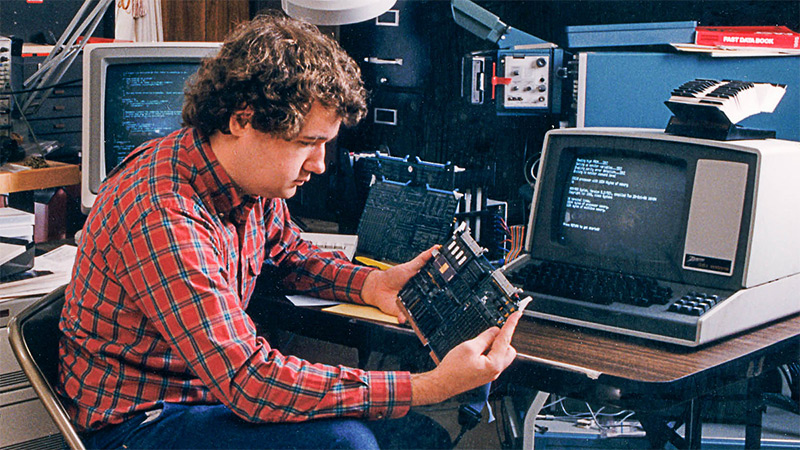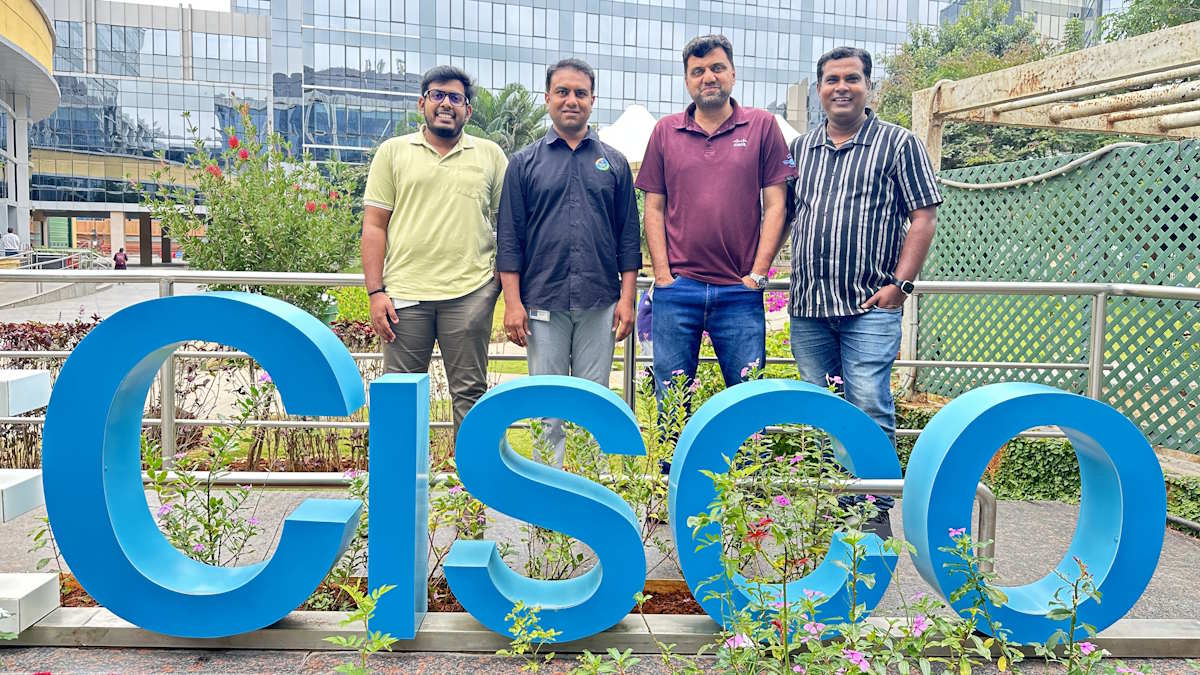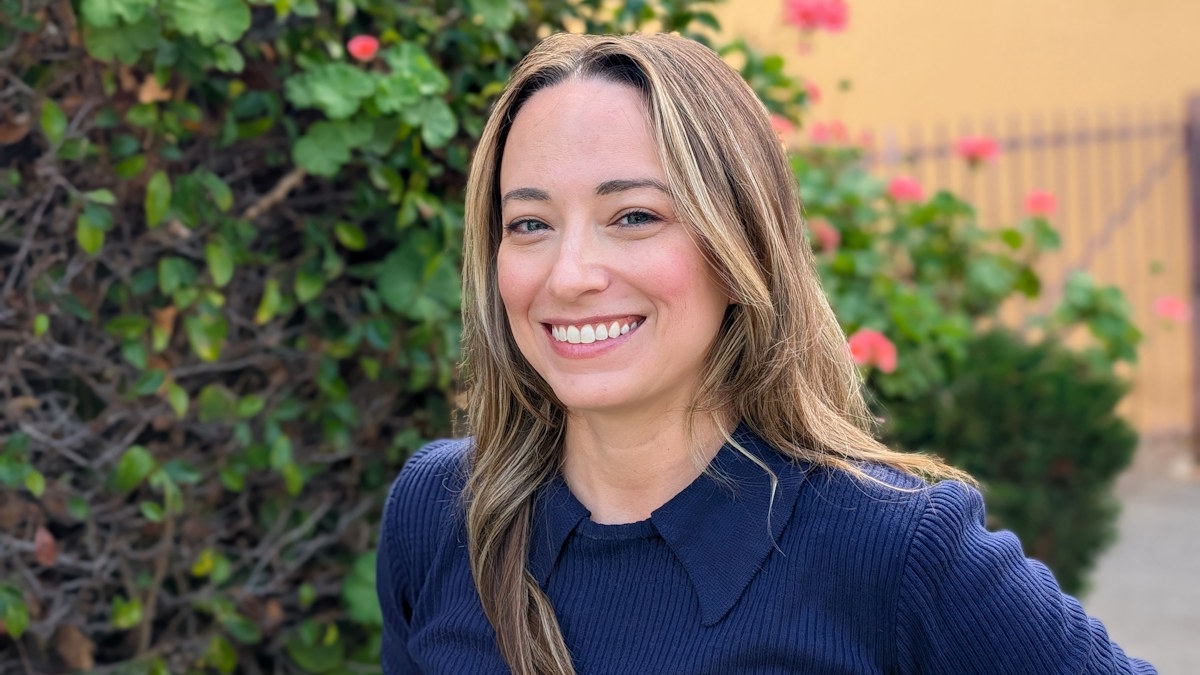This is a post by Karen Bruntz.
His first Cisco badge listed his employee number as 004. His Employee ID in the directory today is 00105. All numbers aside, Cisco Fellow Kirk Lougheed has been here for a long time. From the very beginning, in fact.
In 1986, Kirk was a systems administrator at Stanford University. In July of that year, he joined Cisco as the company’s first engineer, hired by Cisco co-founders and former Stanford colleagues Len Bosack and Sandy Lerner. Kirk continued working on the software he had been developing at Stanford, and soon — using the Cisco Internetworking Operating System, or IOS — they began building and testing routers at Len and Sandy’s house in Atherton, California. The rest is history.
In a lengthy interview, Kirk discussed those early years, including his first day at Cisco in July 1986, as well as the company’s transition from a Silicon Valley startup to a global networking giant, memorable lessons, and career highlights, his advice for young engineers, and much more.
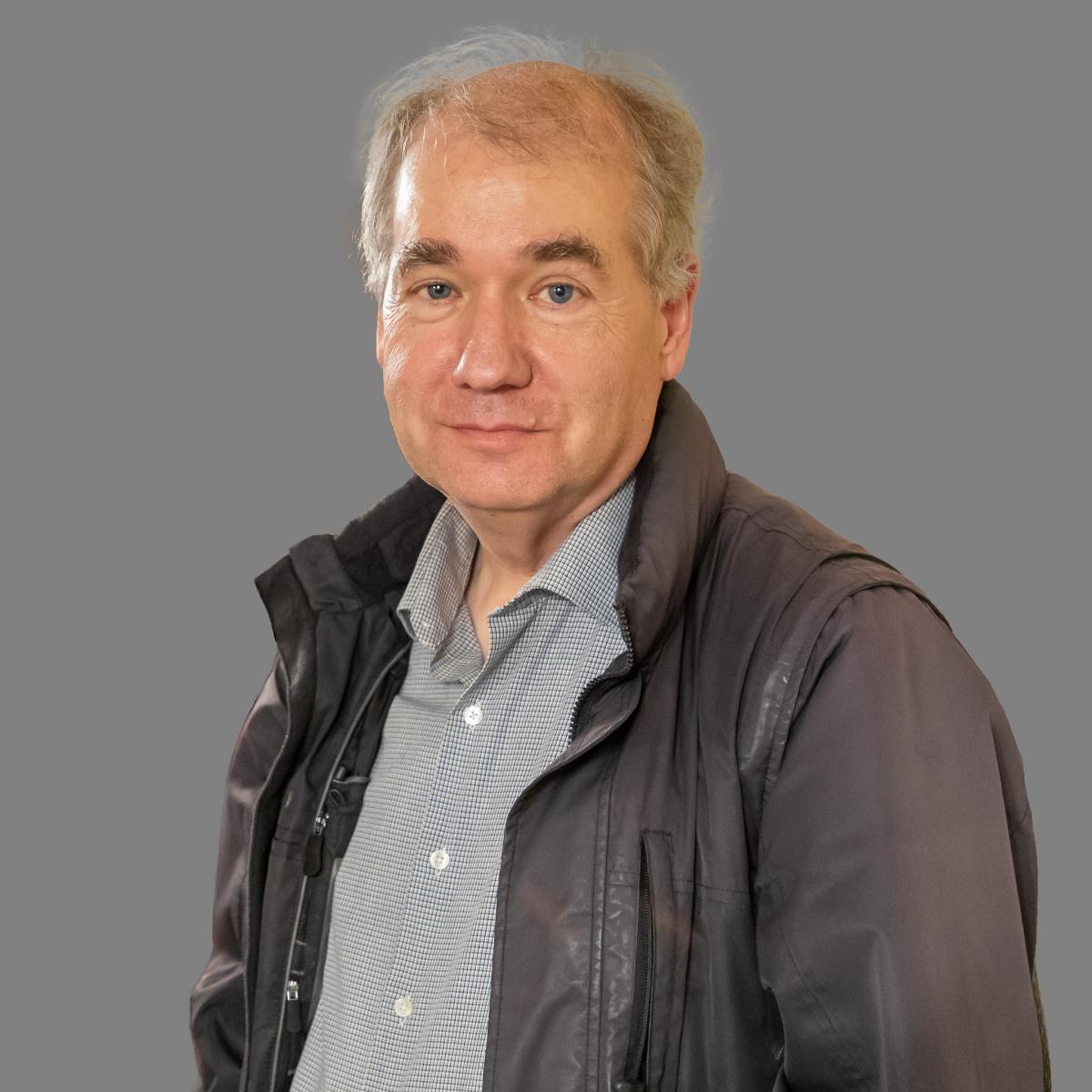
Q: Do you remember much about your first day, your first week?
Kirk: I was working at Stanford University as a systems administrator. I had been working on software that became Cisco IOS, I quit, and my first day at Cisco was in July of 1986. The Cisco offices at that time was a house in Atherton owned by Len (Bosack) and Sandy (Lerner). There were a couple of spare bedrooms. One was used by the administrator, and the other one was basically a hardware lab. I had a table that had a big monitor on it for an HP workstation, and that was the computer.
I showed up and started working on software. In the next couple of weeks, we built and tested the first dozen routers in the living room. Then we made a couple of trips down to UPS to ship them to our first customers — some universities and HP. It's not exactly a standard first day at work. Cisco was just sort of pulling itself together. Working in the house back then were me, Cecilia, who was the admin, and Len was there. Sandy was still working for the Fairchild AI Lab at the time, although she was there evenings and weekends.
We ended up recruiting a handful of people to help, building the routers and then doing the manufacturing of the routers — or I guess the final assembly would be the best term for that. And then we found a ragtag bunch of people to put the stuff together.
Q: Tell us about some of your most memorable moments over your 34-year Cisco career.
Kirk: Cisco was started without any venture funding. Basically, Len and Sandy maxed out their credit cards and took out a second mortgage on their home. I made a loan to the company. There were no salaries for the first two or three months as we were getting things together. We were actually profitable from the beginning. We were making money, not a lot of it. Sometimes we couldn't buy gear for building prototypes because we didn't have the funds. I felt real relief when we landed funding from Sequoia Capital. We never used the money that Sequoia provided to us. But what we had were some people who knew how companies work, knew how companies would run. We were on our way.
Going public (in 1990) was another really exciting thing. It’s like, “This worked!” Earlier in my career, when I was working at Stanford, I would read all the books on “here's how people have started companies in Silicon Valley,” and stories about Fairchild, Intel, and HP, all that sort of stuff. There was the Silicon Valley mythos, and it felt really good to actually have achieved some of that, to play in that arena.
Q: What energizes you, whether it's Cisco, in our industry, or just in general?
Kirk: What has me energized? Well, so …this seems to be a variation of the question, “Why are you still here?” I like the people. There are a lot of people here who I really like, and I really like the company's mission. And especially these days where basically the social media companies are tearing the social fabric pretty roughly, Cisco's mission is pretty honest. We provide networking technology, collaboration technology, services, products. And the customers pay for that and get value for that. If they really like it, they come back for more. We're not trying to play mind games with them. We're not trying to get everybody all stirred up. We've got an honest mission. And I like that.
So, these days, I work half time. Most of my energy is basically helping out with innovation. There's something called the Tech Fund that we provide money and advice to engineers who have some new idea that the business isn't quite sure about. In my personal life, I really like taking a camera and wandering through national parks and state parks, basically doing landscape photography and natural photography.
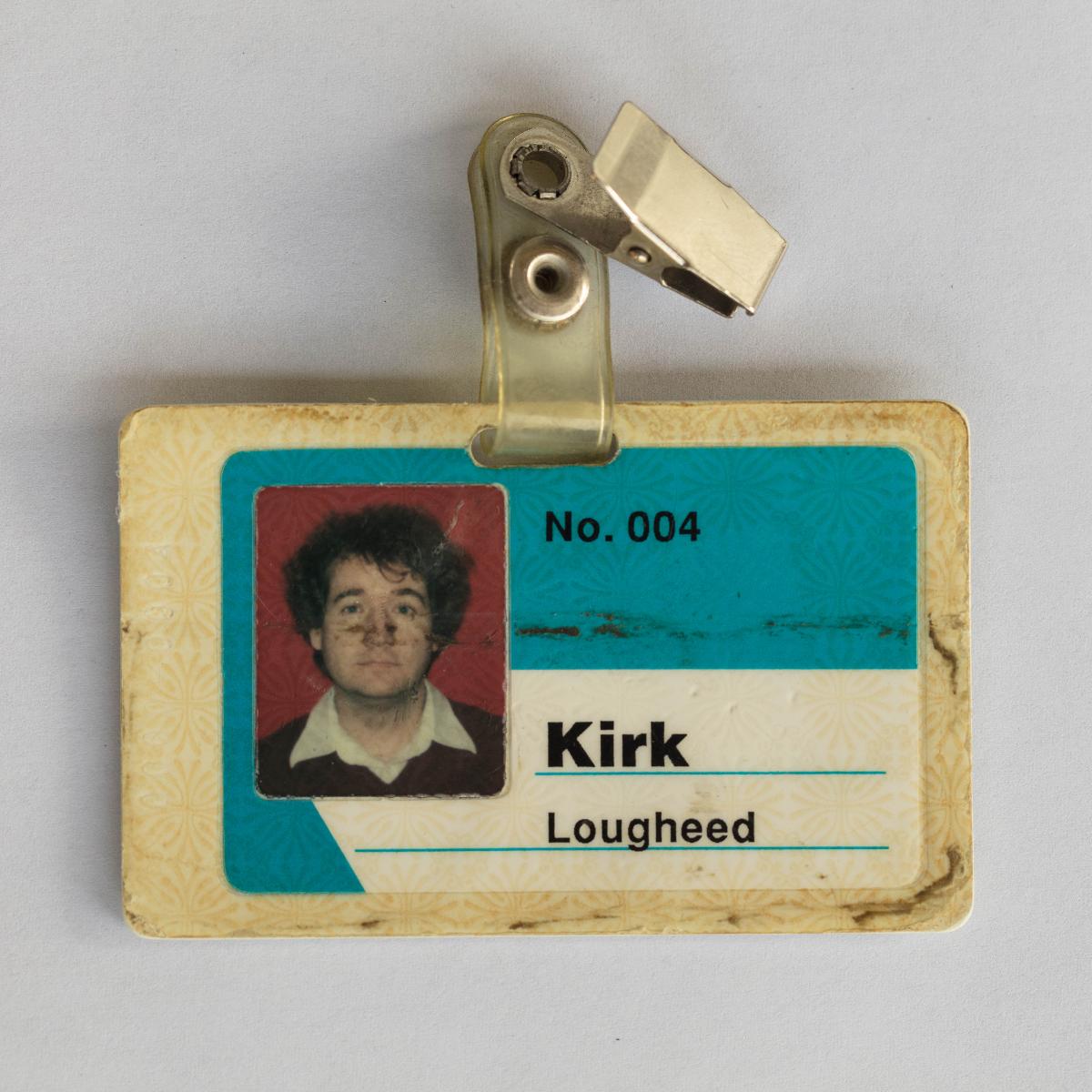
Q: Do you have any advice for young engineers?
Kirk: So, perhaps the best I can do is reflect on my development as an engineer. I spent the first five or six years basically learning my craft, learning how to design things. And then when Cisco got going, it was a crash course, learning technology, creating technology. It's not enough to create new technology to solve new problems. You also have to worry about the politics of it. There's dealing with other people. There's the environment that you're trying to bring this new technology forward in. You have to pay attention to it. There's a real tendency with engineers to think, ”I'm just a technologist. I'm not going to worry about product management. I'm not going to worry about marketing. I'm not going to worry about sales.”
And if you don't do some of that worrying or you're not aware of it, you don't understand it, you're going to fail. If you really wanted to push something beyond just doing your assignment, you have to understand customers. You have to understand how the company you're working in works. You have to be able to remove some people roadblocks. In addition to learning your craft, you have to learn a lot about people. That was a surprise to me, and it's still a surprise to a lot of engineers.
When we do a Tech Fund check, we call it a health check. It's a review of how the project is coming along. The engineers are usually sort of shocked that we're not so much interested in how their technology is coming along. We assume that they're doing a decent job there, and that it'll work. We start asking, “Have you been talking to customers, have you've been talking to the product management people, have you been socializing this thing, who have you been socializing it with, and is it the right person?”
We hound them on this sort of stuff because that's where things fail. Usually the ideas that we've approved are good enough that they'll probably work. But if you don't get all the other stuff lined up, it’ll fail.
Q: Do you still have your first badge?
Kirk: Yes, I lost it and then I found it a few years later. It's got a much younger me on it.
Q: Tell us about Cisco’s transition from being a really small company to where it is now.
Kirk: So one thing I've told people is that I've worked for many companies, from a tiny startup to a small company to a large, international company, and they all happen to be called Cisco. But they were all very, very different flavors of the company over the years. My long tenure at Cisco is very much out of the ordinary. It was out of the ordinary when I started. People in Silicon Valley always moved around. I've told my daughters that I am not a good role model for how to do a career.
As a company gets larger and focuses on different things, what you were doing in the past that you felt comfortable doing may not be the right thing to be doing in the future, may not be possible to do in the future. You need to change the company, how things are done, to grow the company. The company growth can be uncomfortable at times and so you have to realize that growth in the company is going to happen. Your role may indeed change and trying to cling onto what was comfortable in the past is not going to work. There's a lot of people that, you know, [think] this isn't fun anymore, “I quit.” They go off and do something else. I did that once in my time at Cisco and came back four months later. Basically, I figured out that it wasn't Cisco it was me. I needed to adapt.
Q: Were there big turning points where you might look back and think, “Wow, if that hadn't happened, it would’ve been such a different course for Cisco?”
Kirk: The first products were routers and then there was another product that we called a terminal server. They're basically devices you plug one end onto an Ethernet and then you run RS-232 terminals, dumb terminals, into this box, and you would use that to communicate to a server somewhere sitting on the network. This was before everybody wandered around with a laptop. So we had routers and terminal servers, and we had customers that were interested in both. It became pretty clear, very early on that what people really were interested in was the routers. They wanted to build large networks, and they weren't as interested in the terminal server area. But initially, we were not sure which product would be the main product.
The first router was an IP-only router, which makes sense these days because that's the only thing there is, the Internet Protocol. But there were a whole bunch of manufacturers like DEC and Xerox that had their own protocols. Their own network-level protocols would behave sort of like IP but were different, and everybody had their own, their DECnet network, their Apple Talk network, their Xerox network. And we figured out that we needed to support those other network protocols.
We figured out how to do that within the router. We added DECnet to the router. We added AppleTalk in there, and all of a sudden, we were what they call the “multiprotocol” router. We ended up solving a whole bunch of problems. That worked really well for the first 15 years. After that, IP took over everything, and the other protocols faded out.
Q: Earlier, you referred to “the only computer.” Was it shared at first? When did you get your first computer just for your use?
Kirk: When we started, we had a workstation that was lent to Len personally by HP, and it was attached to an Ethernet. There wasn't a lot of other stuff there when we moved into our first building outside of Len and Sandy's place in Menlo Park. We assembled a computer called a DECSYTEM-20, which is the system we used at Stanford and that was accessed through this terminal server thing. It also ran a very old computer-aided design system. The accounting person may have had a PC. As we hired more engineers, we ended up getting Sun servers. If you wanted to get on the big internet in the very early days, we had an ARPANET connection. We knew people in the right places, so we managed to wangle an ARPANET connection, before ARPANET was available to ordinary mortals. You needed to have a research contract, be a university, or some commercial outfit that had the research contract. We had a lot of people, a lot of military types and research types, who were interested in our products.
Right after we started the company, there started to be regional networks funded by the National Science Foundation, and we sold a lot of routers to these predecessors to the internet as we know it. It was now legal for random commercial usage of the network, and we ended up being connected to something called the Bay Area Regional Network. In the beginning, I didn't have a particular need for my own computer. I was quite comfortable with using the company servers to do my work. Sometimes in the early ‘90s, I got a Mac or something like that from my own personal use within Cisco. It wasn't until the late 90s that I had a computer on my desk that was, quote, my computer.
###
We welcome the re-use, republication, and distribution of "The Network" content. Please credit us with the following information: Used with the permission of http://thenetwork.cisco.com/.
